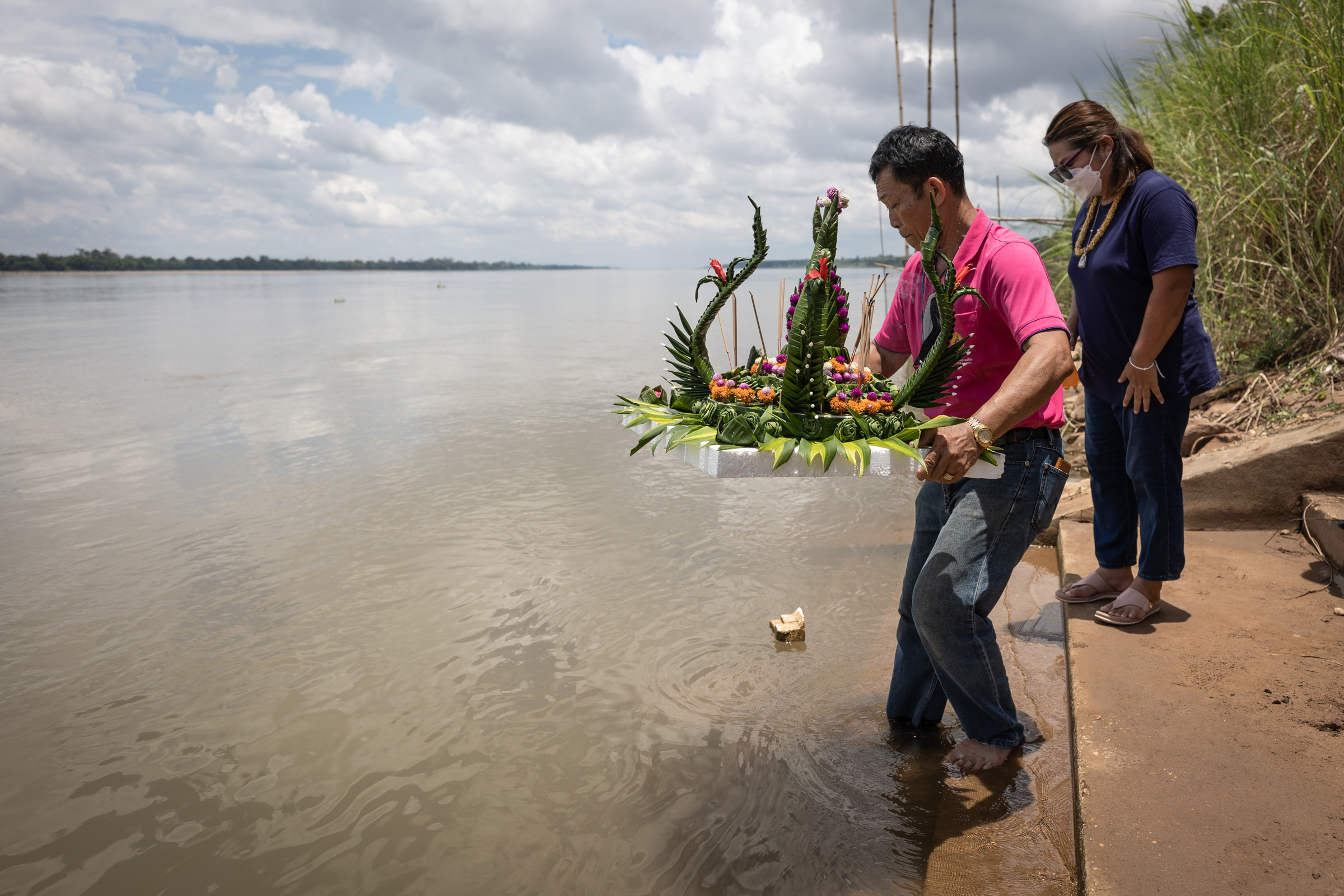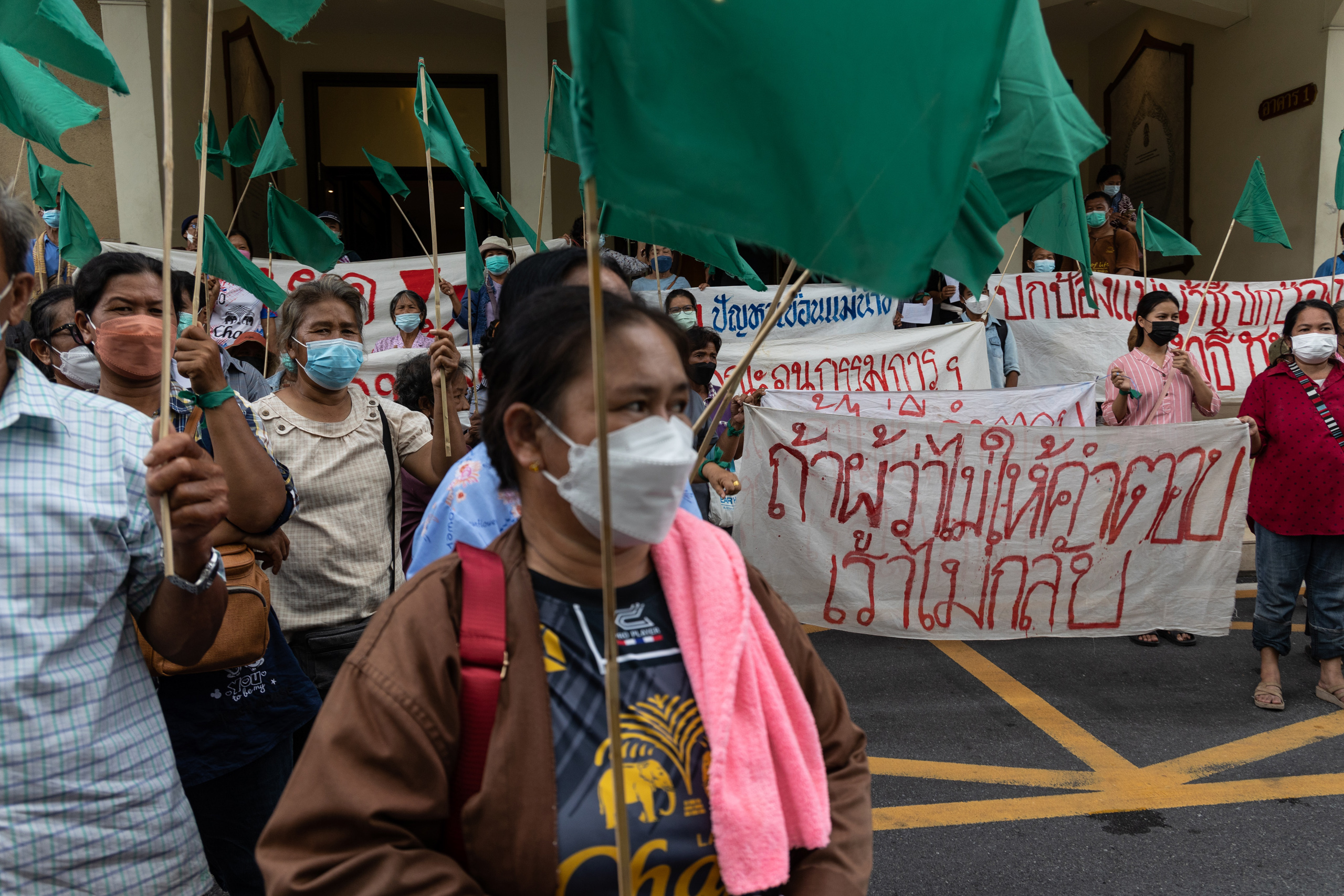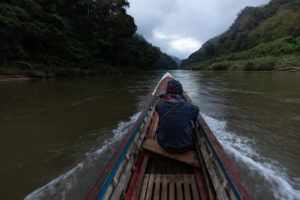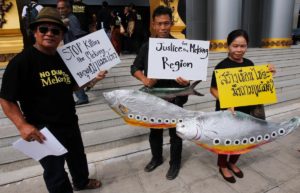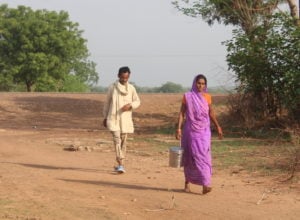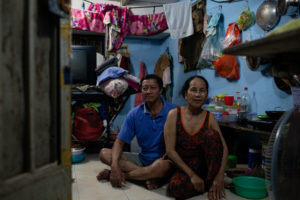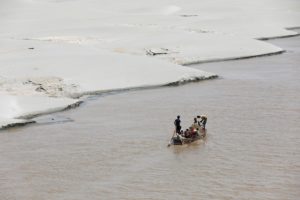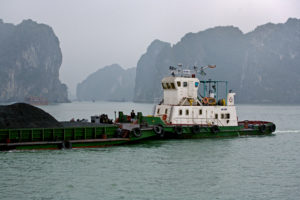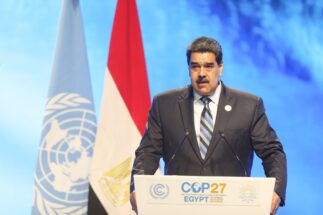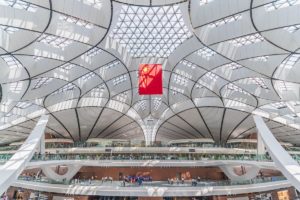In June 2022, Chantra Chanthathong travelled from his home in northeast Thailand to the Ministry of Agriculture and Cooperatives in Bangkok. Along with around 100 fellow villagers, he was part of a group demanding compensation for thousands of people who say they have been negatively impacted by a host of large- and small-scale irrigation projects intended to “green” northeast Thailand.
“We’re doing it to relieve our concerns from decades of struggle,” he says of the demonstration. “I don’t know when it will end, but I wish we could bring the heartbeat of the river back.”
Chanthathong lives in Ban Don Kaeo, a village in northeast Thailand situated between the Roi Et and Yasothon-Phanom Phrai dams on the Chi River. Completed in 2000, the dams are part of the Kong-Chi-Mun (KCM) irrigation project, which involved building 14 large dams on the Chi and Mun, both tributaries of the Mekong.
The idea to divert water from rivers, including the Mekong, to irrigate farmland in the dryer north of Thailand has been a passionately held goal of successive governments. But these mega-projects have long been criticised by local communities.
Chanthathong and his neighbours say they have experienced regular flooding of their homes since the construction of the dams, and that they disrupted the seasonal flow of water that they used to depend on to grow rice. He says a poor response from national authorities in response to their concerns has driven him to the streets of the capital.
“We are living evidence that the Mekong water diversion project results in more negative impacts than the benefits it claims,” says Sirisak Saduak, who works with communities on behalf of a local NGO in the Chi river basin.
A green northeast
Ever since the KCM project was approved by the cabinet in 1989, infrastructure projects have mushroomed across northeast Thailand’s Mekong tributaries. Two early dams, the Rasi Salai and Hua Na on the Mun River, inundated rice paddies, villages and the flood plain forest where locals foraged, leading to decades of protests.
Initially announced as a small rubber weir, by the time it was completed in 1994 the Rasi Salai was a seven-sluice concrete irrigation project cutting up the Mun River, the largest Mekong tributary in Thailand. Ninety kilometres upstream, the Hua Na dam followed in 1999, and is twice the size of the Rasi Salai.
These two dams fundamentally altered the livelihoods of thousands of villagers. Some lost acres of rice paddy as land was inundated and salinisation increased, due to large underground rock-salt deposits. Fishers were forced to adapt to changes in water flow and fish stocks.

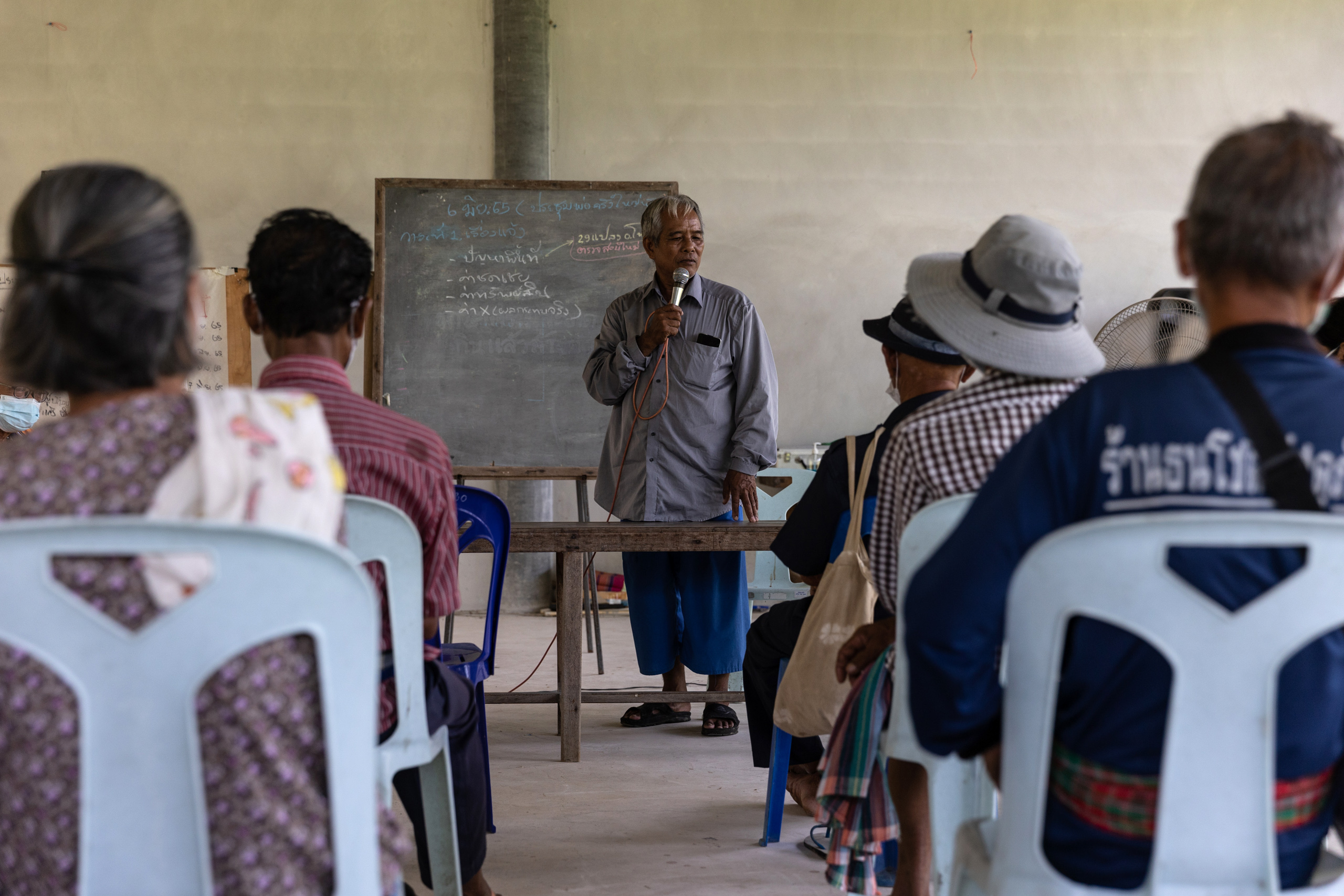
Because of the level of public resistance, dams and the KCM project itself became stigmatised and further work was put on hold. But affected communities have been fighting for compensation and assistance ever since.
“The state needs to return rights to manage water to the people who know best about their environment,” says Saduak. “All the problems from the dams built 30 years ago haven’t been resolved and the government is still pushing forward a new mega water-diversion project,” he adds.
Chaiya Chantree, 50, is the head of Ban Nong Orn village, on the banks of the Mun a few kilometres from the Hua Na dam in Sisaket province. He remembers when the area was pristine, filled with abundant life.

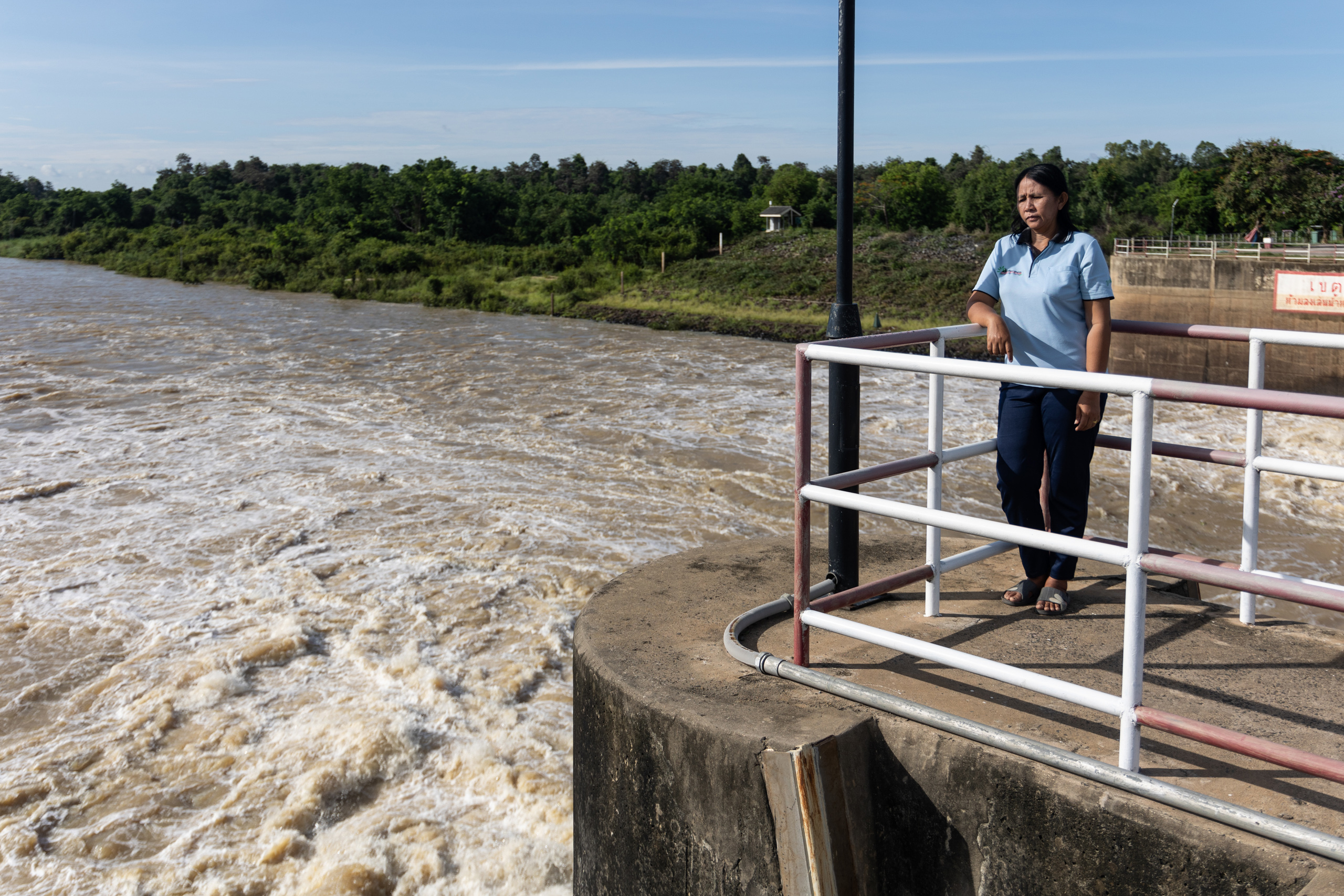
Today, Chantree lives in an unpredictable environment. Every year, he and hundreds of locals contest the local authorities’ decision on when to open the Hua Na dam’s sluice gates. During the monsoon, the dam’s sluices are shut to prevent flooding of the nearby city of Ubon Ratchathani, but this inundates Chantree’s rice paddies. He says government compensation does not cover residents’ losses.
“Many communities in the Mekong basin view us as a case study. They ask: ‘How do you live with dams?’” Chantree says. “If we resettle, we have to start from zero, so my answer is we must adapt to live here with dams.”
Loei worries and the KLCM
In 2012, an environmental impact assessment (EIA) was carried out for a new mega irrigation project in Thailand’s northeast, involving infrastructure projects on various river basins including the Chi and the Mun. With this, the government introduced a rebranded “Mekong-Loei-Chi-Mun” (KLCM) project, with the added watershed of the Loei River, another Mekong tributary and a natural border between Thailand and Laos.
In its first phase, the revised KLCM megaproject envisages bringing 1.9 billion cubic metres of water annually from the Mekong through the Loei in order to irrigate northeast Thailand – reversing the natural direction of flow. The Loei river mouth, where it meets the Mekong, is to be widened under the project. The water will travel through 17 canals and tunnels to the Ubol Ratana dam in Khon Kaen province. The project is expected to cost more than 1.93 trillion baht (around USD 51 billion) and will take 20 years to complete.
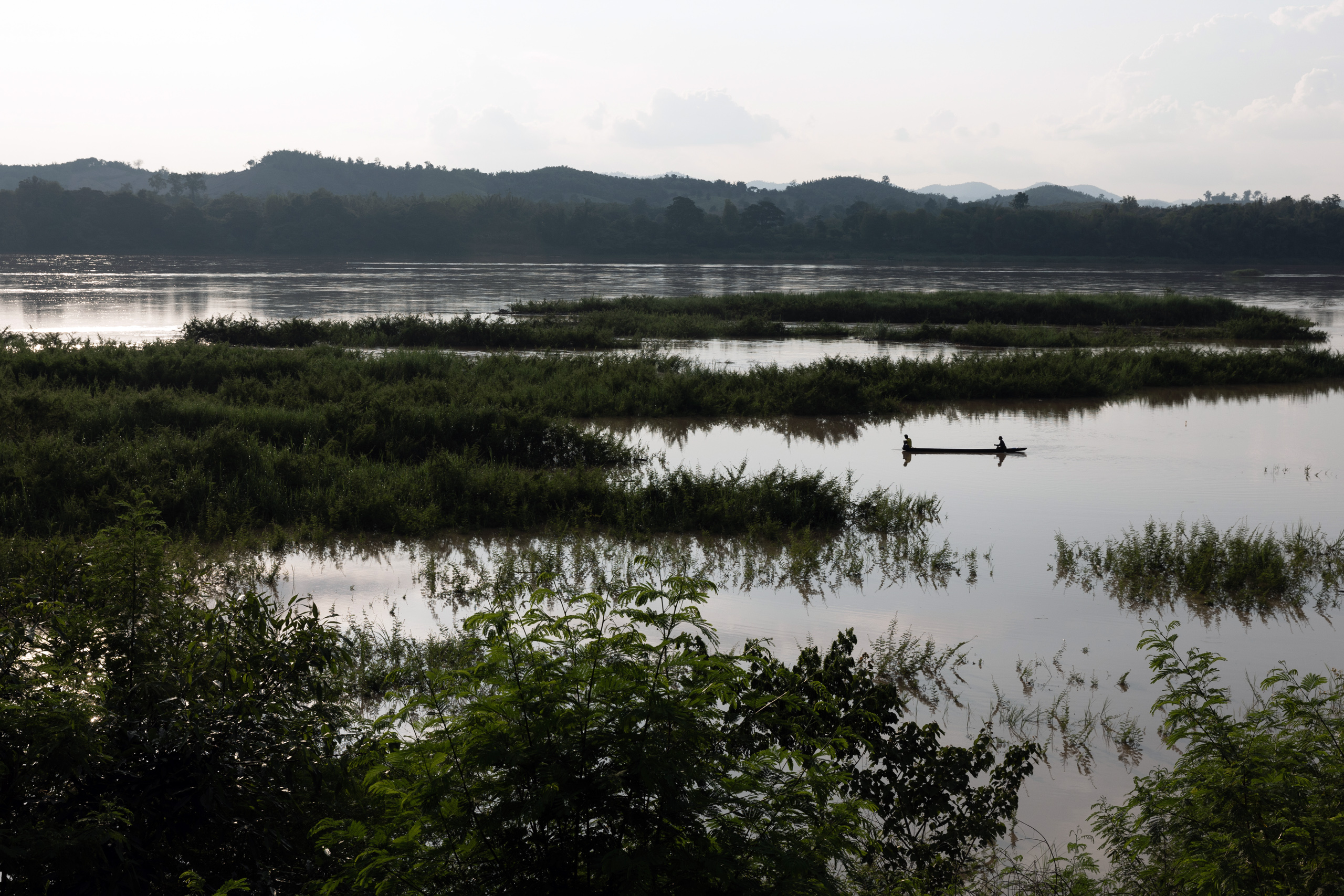
Water diversion projects on the Loei are not restricted to the vision of the KLCM. Jiraporn Suwanampai, who works in a rubber plantation near the indigenous village of Ban Klang, is worried about the massive Sri Song Rak “floodgate” under construction on the Loei, just a few kilometres from where it meets the Mekong. Conceived in 2015, the 5 billion baht (USD 132 million) project consists of seven gates on the Loei River: two over a natural stream and five over newly dug waterways. The gates will manage the flow of the Leoi for 16 kilometres before it enters the Mekong, reducing flooding and redistributing the water across a vast area of agricultural land, according to the Royal Irrigation Department.
Many people in Ban Klang oppose the dam, saying it will affect the local ecosystem and could cause unseasonal flooding; they also worry about land grabs. But other local communities support the project and the infrastructure it could bring.
Despite it being close to a proposed river mouth-widening site, the floodgate is not officially included in the KLCM project and did not require an EIA, according to a project representative, as it does not meet the criteria set out in a notification by the Ministry of Natural Resources for projects where an EIA is needed.
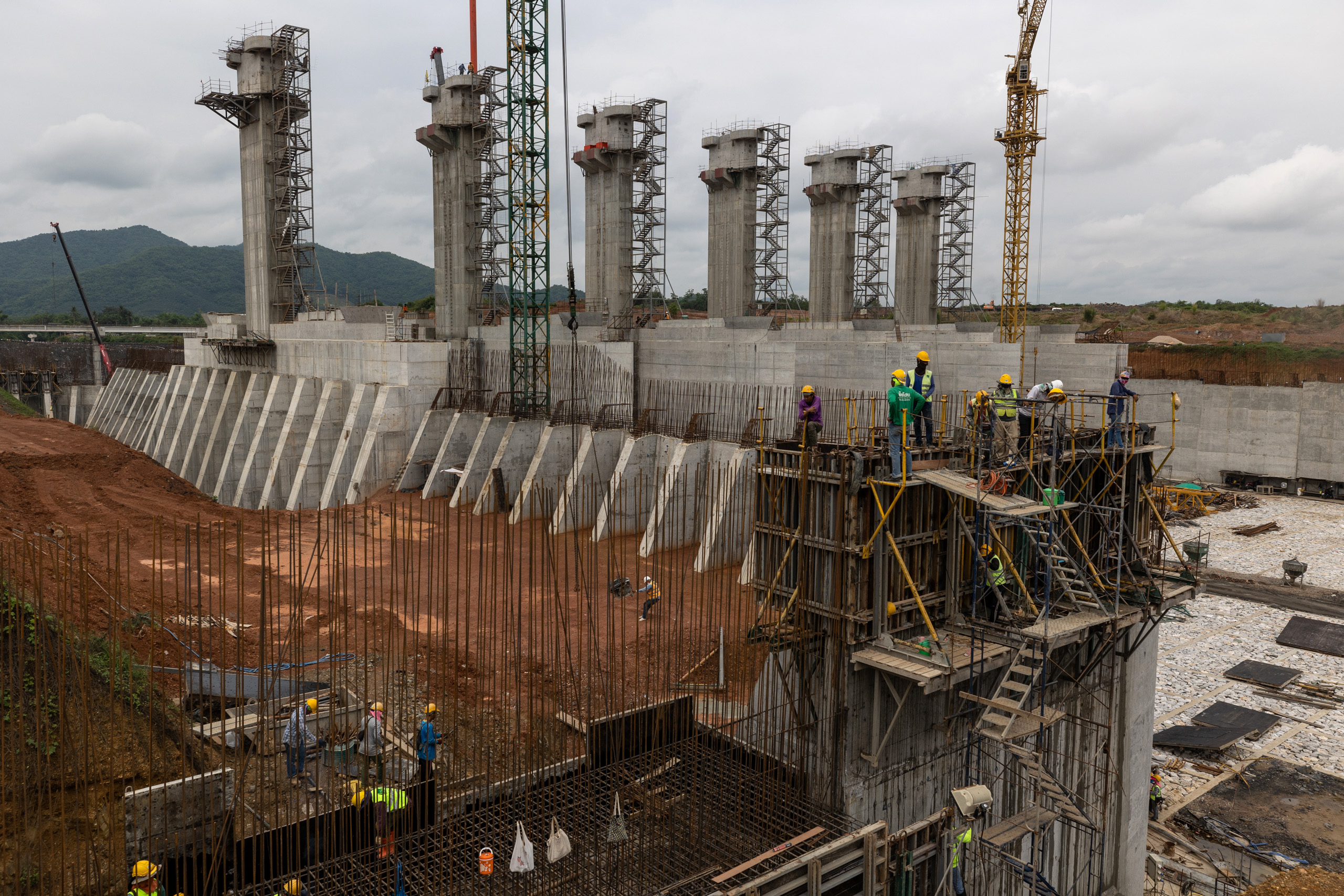
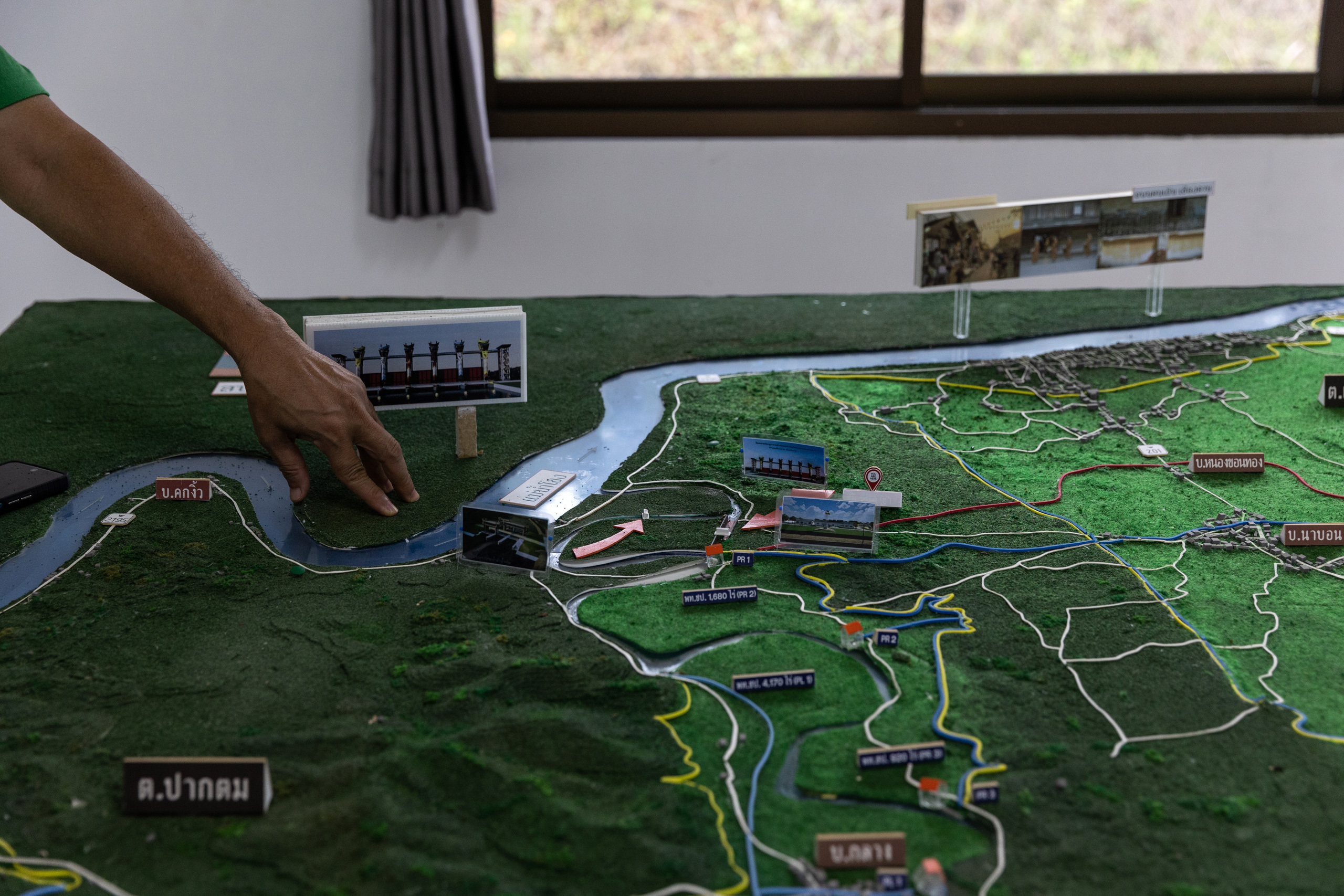
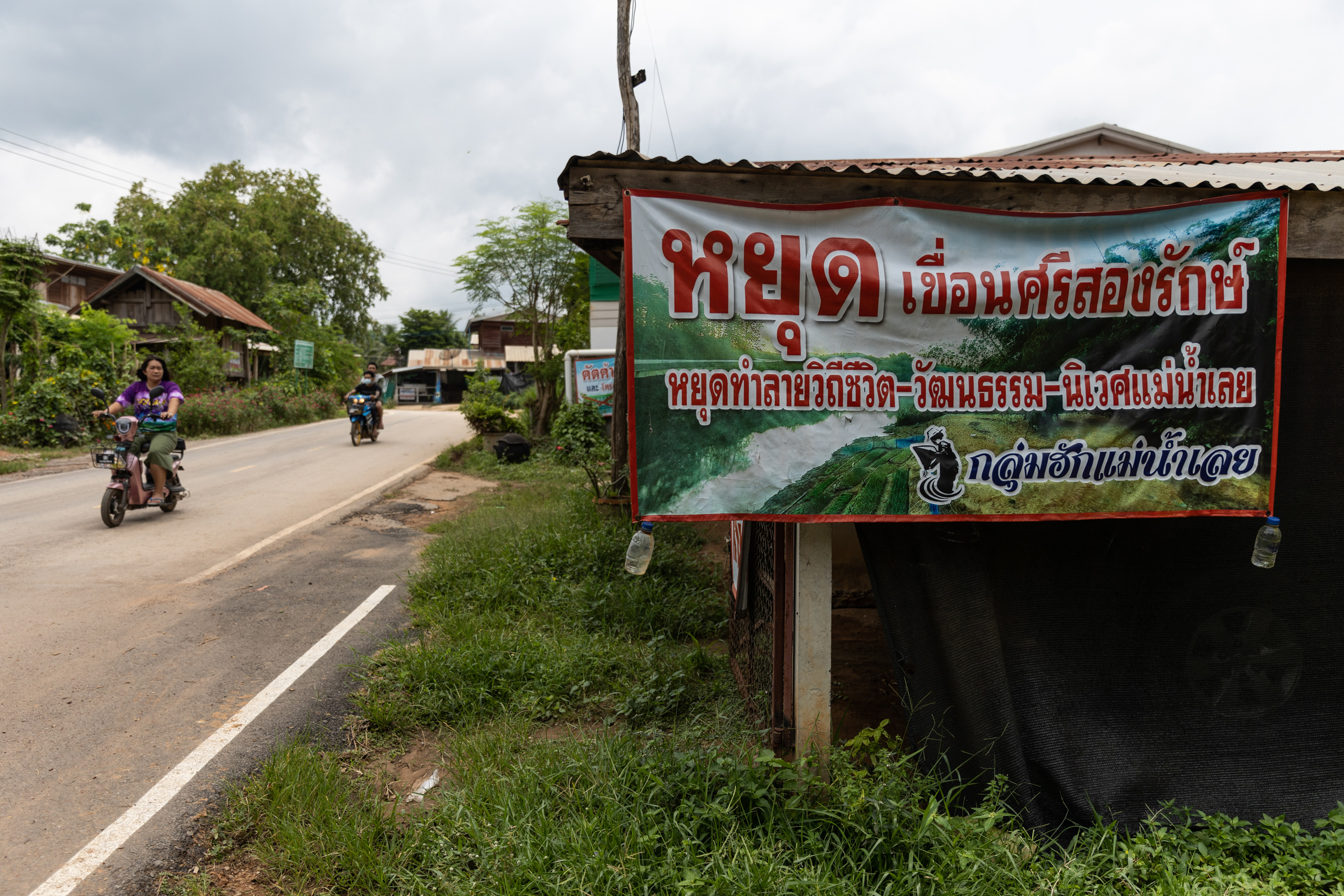
Master sergeant Prakorb Poonpol, head of construction for the project, reaffirmed to The Third Pole that the Sri Song Rak project is not part of the KLCM.
“Officials like to divide the water-development programme [for the northeastern region] into small-scale projects, so as not to look like a megaproject, and easily progress forward,” says Santiparp Siriwattanapaiboon, professor of environmental science at Udon Thani Rajabhat University.
Some, including Siriwattanapaiboon, believe the Thai government is simply rebranding the megaproject, which has already attracted years of public scrutiny. “It is like piecing jigsaws together,” says Siriwattanapaiboon.
Nature and culture at stake
Four hundred kilometres from the mouth of the Loei lies the lower Songkhram River – the last expansive stretch of river to remains undammed in Thailand’s northeast. For most of the year, the Songkhram flows into the Mekong where they meet in Nakhon Phanom province. But during the rainy season, the Mekong flows into the Songkhram and the surrounding plains, creating unique flooded forests which offer breeding grounds for many aquatic animals and plants. In 2019, the lower Songkhram river basin was declared a Ramsar site, a wetland of international importance, in recognition of its environmental, ecological and cultural significance.
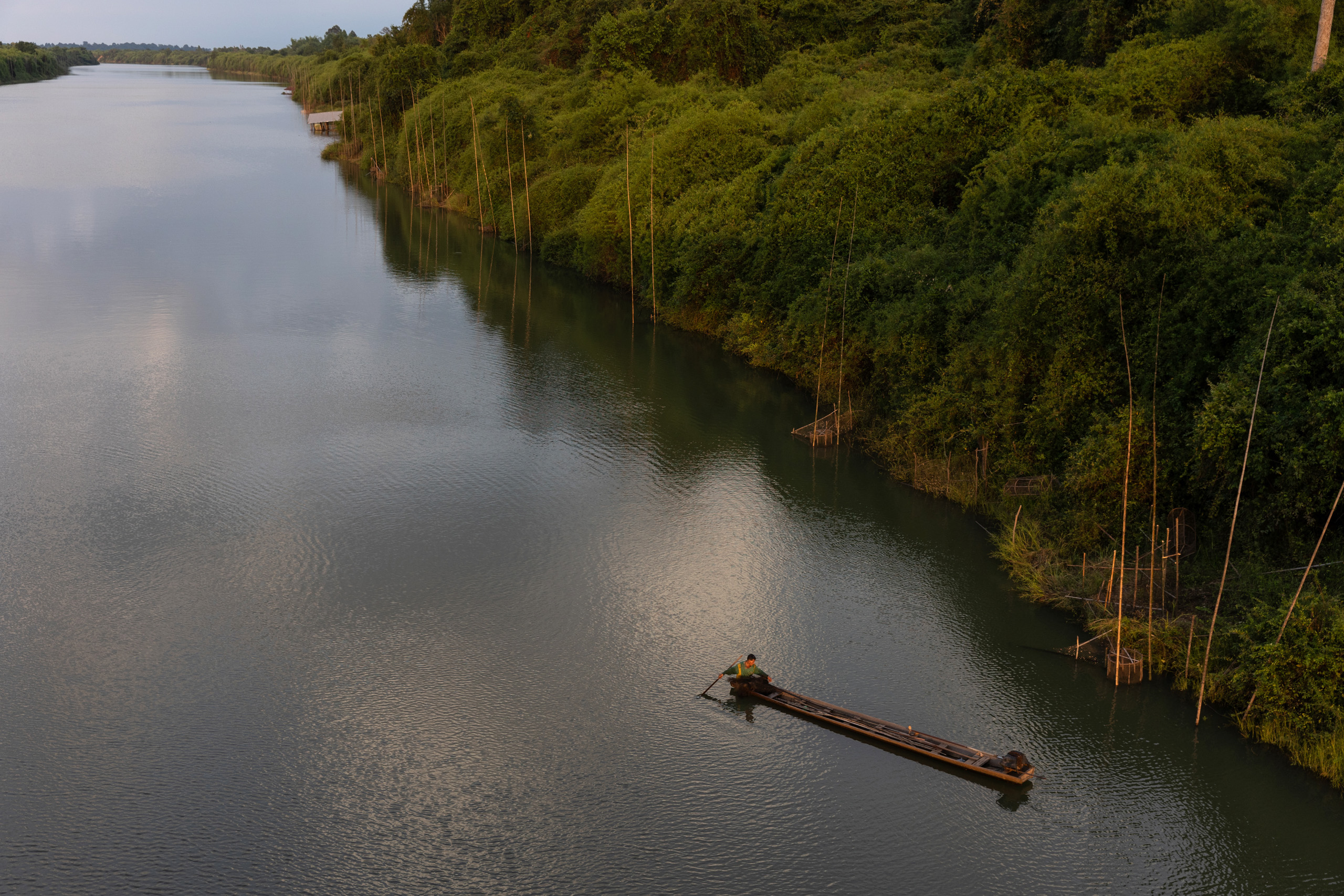

The local traditional fishing industry has resisted plans to build a dam on the river for almost four decades. The purposed dam would be built at Na Piang village, Chaiburi district, less than 10 kilometres from where the Songkhram meets the Mekong. The project aims to mitigate floods and drought in the river basin. Despite the designation as a Ramsar site, the project is still pending.
The proposed Songkhram dam is also not officially included in the KLCM project, but in terms of geography and engineering, it would be very similar to the Sri Song Rak floodgate, according to Siriwattanapaiboon, including five gates.
In September 2022, Thailand held another round of public hearings for the KLCM project. In response, local communities from different river basins in the northeast came together to discuss their decades-long opposition to the project and its predecessors.
